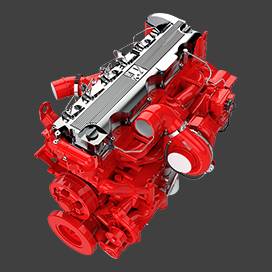Oct . 17, 2024 14:59 Back to list
Steps to Safely Remove a Brake Drum from Your Vehicle
Removing a Brake Drum A Step-by-Step Guide
When it comes to vehicle maintenance, one crucial component that often goes overlooked is the brake system. The brake drum, part of a drum brake system, plays a vital role in ensuring the safety and efficiency of your vehicle's braking performance. Over time and with regular use, brake drums can warp, wear down, or become damaged, necessitating their removal for inspection or replacement. In this article, we will guide you through the process of removing a brake drum safely and effectively.
Safety First
Before you begin, always prioritize safety. Make sure you are working in a well-ventilated area and have the necessary tools at your disposal a jack, jack stands, lug wrench, socket set, and possibly a brake drum puller. It's also recommended to wear safety goggles and gloves to protect against debris and sharp edges.
Step 1 Prepare Your Vehicle
Begin by ensuring your vehicle is parked on a flat surface and the engine is turned off. Engage the parking brake to prevent any unintended movement during the process. Next, loosen the lug nuts on the wheel that corresponds to the drum you wish to remove. Do not fully remove them yet; just break the tension.
Step 2 Raise the Vehicle
Using a jack, lift the vehicle off the ground and then securely place jack stands under the vehicle to ensure stability. This step is crucial for your safety while you work underneath the car. Once the vehicle is securely elevated, you can remove the lug nuts completely and take off the wheel to expose the brake drum.
Step 3 Inspect the Brake Components
Before proceeding to remove the brake drum, take a moment to inspect the brake components for any signs of wear or damage. Look for cracks in the drum, wear on the brake shoes, or any leaking brake fluid. This inspection will help you assess whether further maintenance is necessary.
removing a brake drum

Step 4 Locate the Brake Drum Retaining Hardware
Most brake drums are secured with a set of retaining screws or bolts. Locate these fasteners; they might be hidden under some dust or debris. Use the appropriate socket or screwdriver to remove them. In some cases, you may need to tap on the drum lightly with a hammer to break the rust seal that may have formed between the drum and the wheel hub.
Step 5 Remove the Brake Drum
Once the retaining hardware is removed, try to pull the brake drum straight off the wheel hub. If the drum is stuck, you may need to use a brake drum puller to apply even pressure and gently extract it from the hub. Be cautious and avoid using excessive force, as this can cause damage to the drum or the surrounding components.
Step 6 Inspect the Drum and Brake Shoes
With the drum removed, take this opportunity to inspect both the drum and brake shoes thoroughly. If the brake shoes have worn down excessively or the drum shows signs of deep grooves or damage, it is advisable to replace them. Cleaning any dust or debris from the drum and brake assembly will also improve overall braking performance.
Step 7 Reinstallation
If you're not replacing the brake drum or shoes, you can reinstall the drum by reversing the removal steps. Ensure that all hardware is tightened to the manufacturer's specifications, and do not forget to reinstall the wheel. Once the wheel is in place, lower the vehicle back to the ground and tighten the lug nuts securely.
Conclusion
Removing a brake drum might seem intimidating, but with the right tools and guidance, it's a manageable task. Regular maintenance of your brake system is crucial for the safe operation of your vehicle, and being able to remove and inspect the brake drums is a valuable skill for any car owner. Remember, if at any point you feel unsure or uncomfortable performing these steps, it's always best to consult a professional mechanic. Prioritizing safety and proper maintenance will ensure your vehicle runs smoothly for years to come.
-
ROR Web Development: Build Fast, Scalable, Secure Apps
NewsAug.17,2025
-
Scania Brake Drums: OEM Quality for Optimal Safety & Durability
NewsAug.16,2025
-
R.V.I: Advanced Remote Visual Inspection for Precision
NewsAug.15,2025
-
Discover HYUNDA: Innovative Vehicles, Equipment & Solutions
NewsAug.14,2025
-
R.V.I: Unlock Advanced Insights & Real-time Performance
NewsAug.13,2025
-
Kamaz Brake Drum: Durable & Reliable for Heavy Duty Trucks
NewsAug.12,2025
